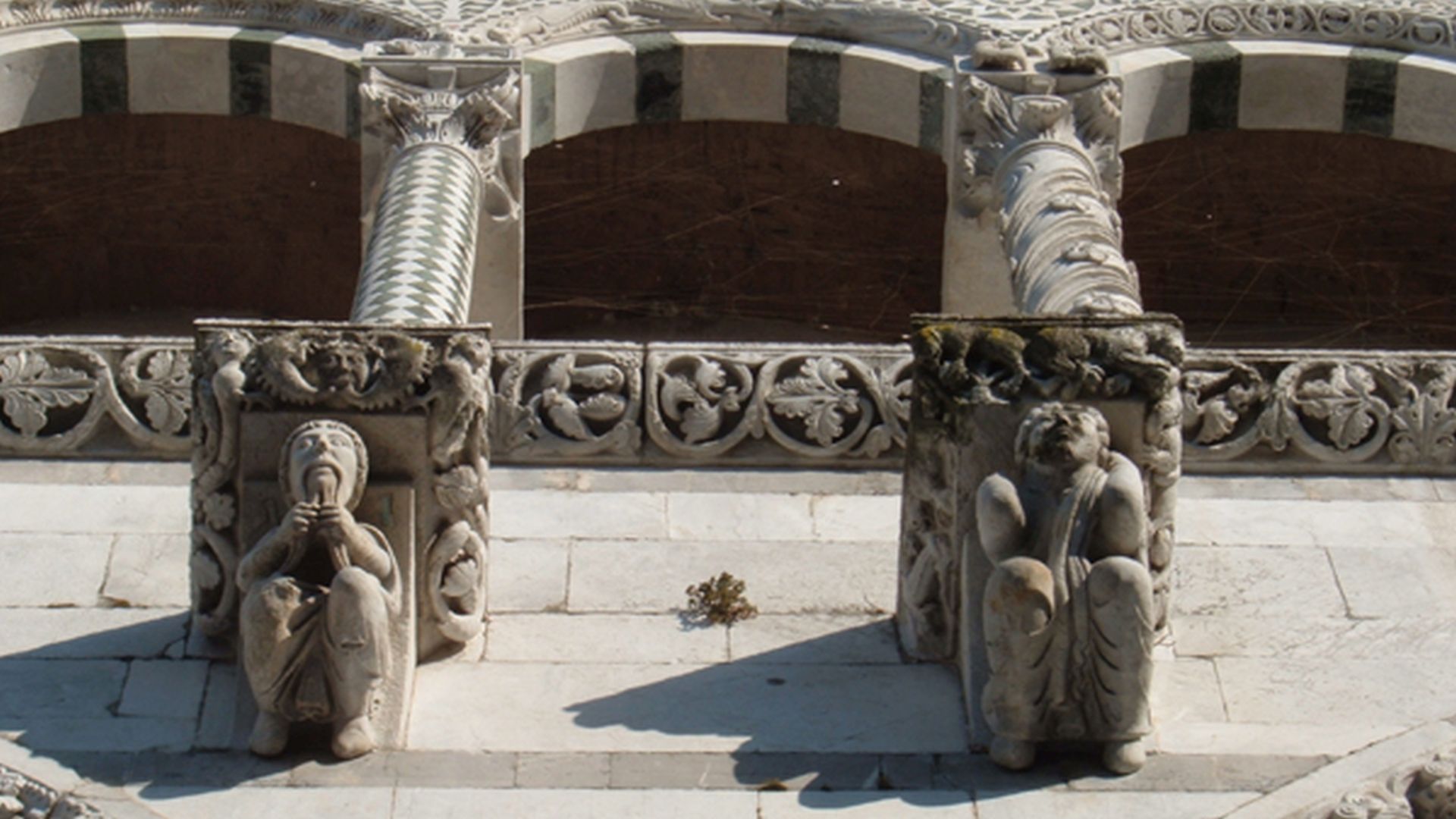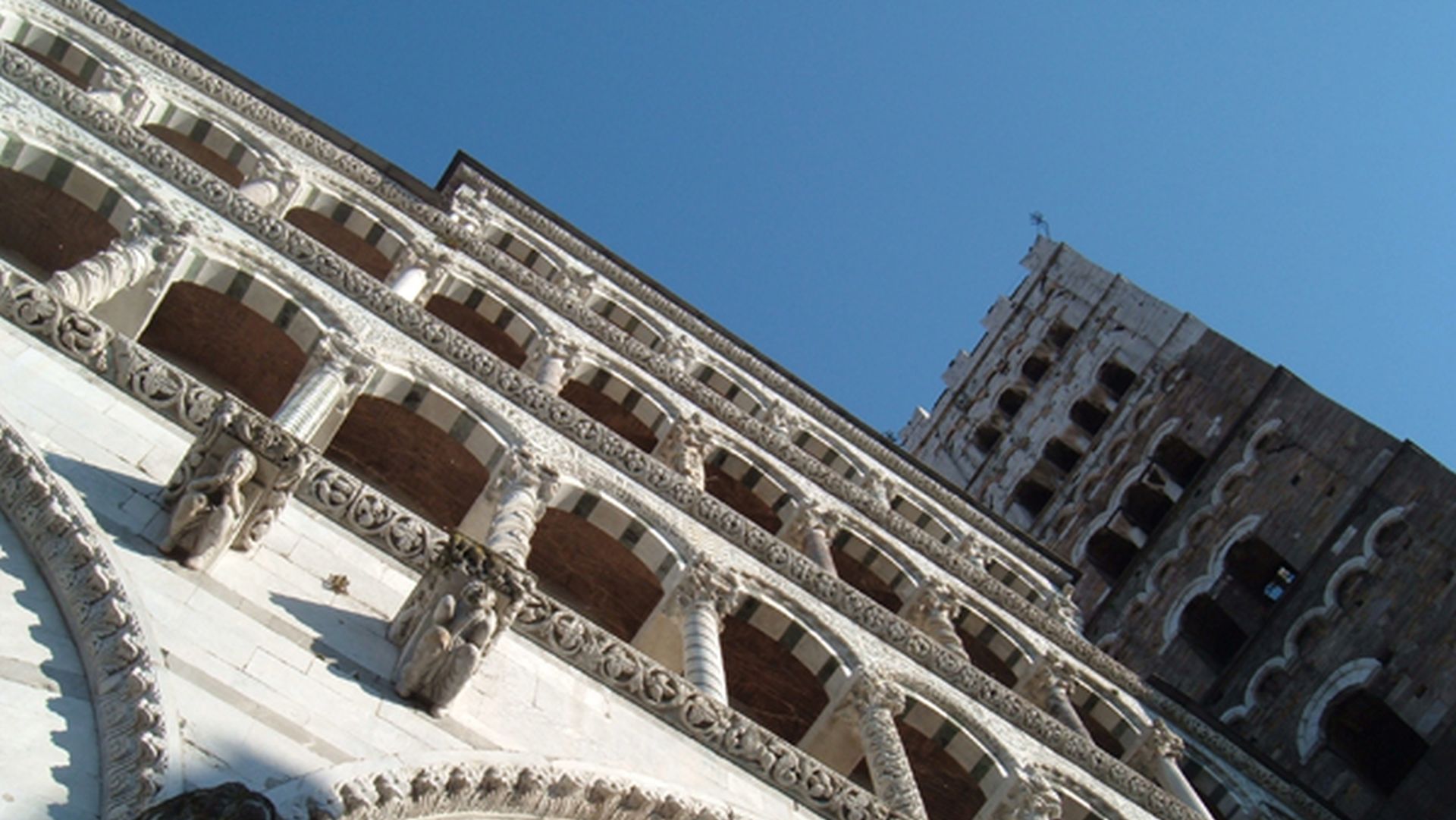The Cathedral of San Martino, with its ‘lame’ portico and façade decorated with small columns, is one of the richest and most interesting churches in Lucca.
Consecrated in 1070 by Pope Alexander, initially with five naves, the church was rebuilt and enlarged several times. The most significant intervention dates back to 1308, the year in which the façade was redesigned in its current asymmetrical layout and the luxuriant decorations of columns and cornices were added.
.jpg)


.jpg)
.jpg)
With the last intervention, which was completed in 1637, the external decorations and the building of the Sanctuary Chapel were completed.
Two symbolic works of art of the city are kept inside: the sarcophagus of Ilaria del Carretto, a Renaissance masterpiece by Jacopo della Quercia, and the ancient Holy Face.
Ilaria del Carretto was the wife of Paolo Guinigi, lord of Lucca in the first decades of the 15th century, and died at the age of 27 in 1405. To commemorate her, her husband commissioned her effigy from an artist considered to be among the greatest sculptors of the time. The work is one of the most significant of Italian Renaissance sculpture.
The Holy Face is a wooden crucifix that is said to have been made by Nicodemus, a follower of Christ. Having miraculously arrived in Lucca, it was first kept in the church of San Frediano, and then transferred to the cathedral church. In memory of this event, a long, participatory procession is held in Lucca every year through the streets of the historic centre, illuminated with thousands of small candles placed on cornices and architectural reliefs, which is known as the Luminara. Over the centuries, the Crucifix acquired ever greater fame until it became the symbol of the city itself and an obligatory destination of devotion for pilgrims travelling along the Via Francigena
Connected to Piazza San Martino are Piazza San Giovanni, where the Church of Saints Giovanni and Reparata is located, and Piazza Antelminelli, with the Cathedral Museum and the neoclassical basin designed by Lorenzo Nottolini to complete the monumental work of the aqueduct.
Since August 2016, after major restoration work, the cathedral bell tower has also been open to the public. Dating back to the 12th-13th centuries and about 60 metres high, the bell tower was built with heterogeneous local materials, such as Guamo stone and limestone from Santa Maria del Giudice (both quarries are located a few kilometres from the city, at the foot of Monte Pisano). Climbing the 217 steps, visitors will reach the belfry from where they can enjoy a 360° panorama of the city and the plain of Lucca.
The atrium is accessible with a 25% slope ramp (227x140). The main entrance has a 19% slope ramp (118x118) and a subsequent 4 cm descending step.
Puccinian Itineraries
Giacomo Puccini, after having been baptised in his birthplace with special authorisation, was taken to the Cathedral for the completion of the baptismal rites.
In this same Cathedral all his ancestors had carried out a considerable part of their activities as organists, composers and concertmasters. At the time, the church was equipped with two splendid instruments, now unfortunately dismantled, of which the choir lofts and reeds remain visible.
For the Feast of the Holy Cross in 1872, young Giacomo made his professional debut here, as assistant to the second choir, for a fee of 3.72 lire. Among the music on the programme was a Mottettone by his father Michele. His uncle Fortunato Magi conducted.
In spite of his mother Albina's numerous requests, Giacomo was never able to obtain the position of organist, occupied by Puccini uninterruptedly for 124 years - from 1740 until the death of his father Michele in 1864 - due to the poor judgement of the members of a commission, to whom the Opera di S. Croce had entrusted the decision.
Having become famous and settled far from Lucca, Puccini always remembered his first appearances and did not fail to take an interest in the music being performed. It was precisely of those that he spoke with his friend Gustavo Giovannetti and in September 1887 he wrote to his brother-in-law Raffaello Franceschini, with his usual ability to mix the sacred and the profane: ‘Tell me what is new in Lucca and what music they are making for Santa Croce and all that has happened, deaths, rapes, thefts, adulterers, sheep’.
